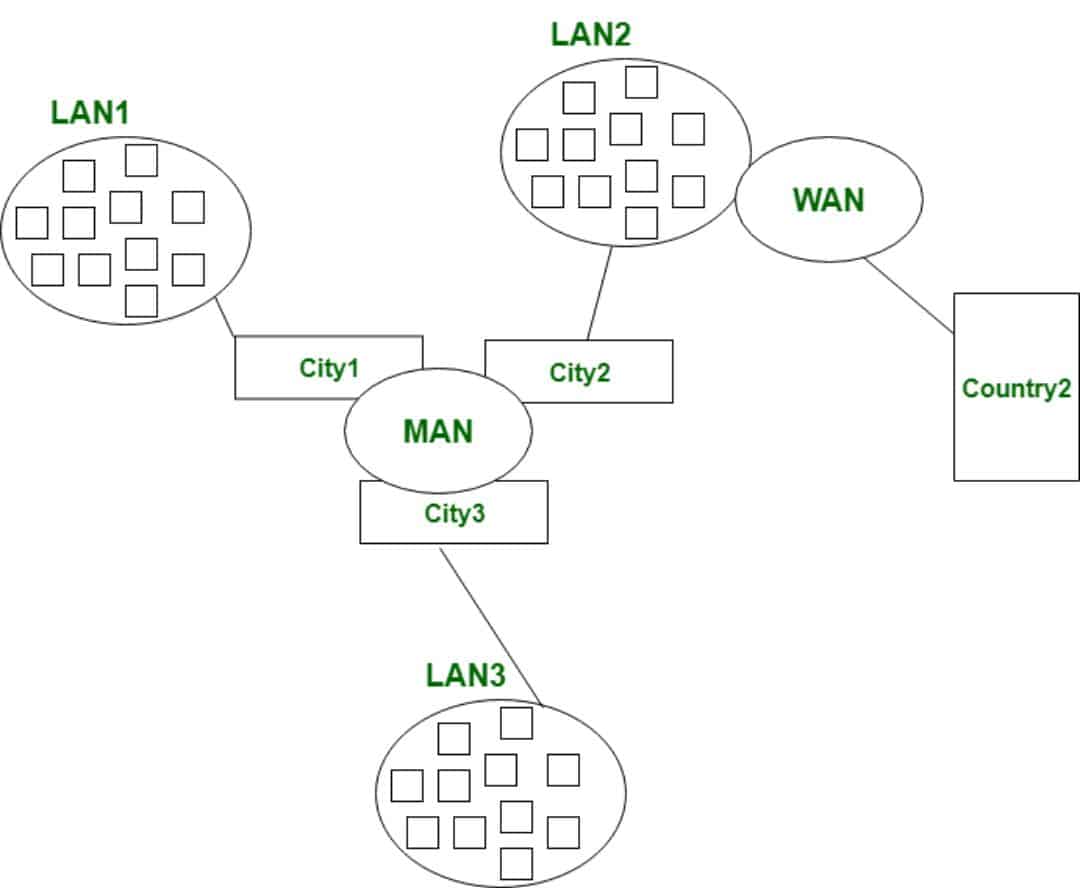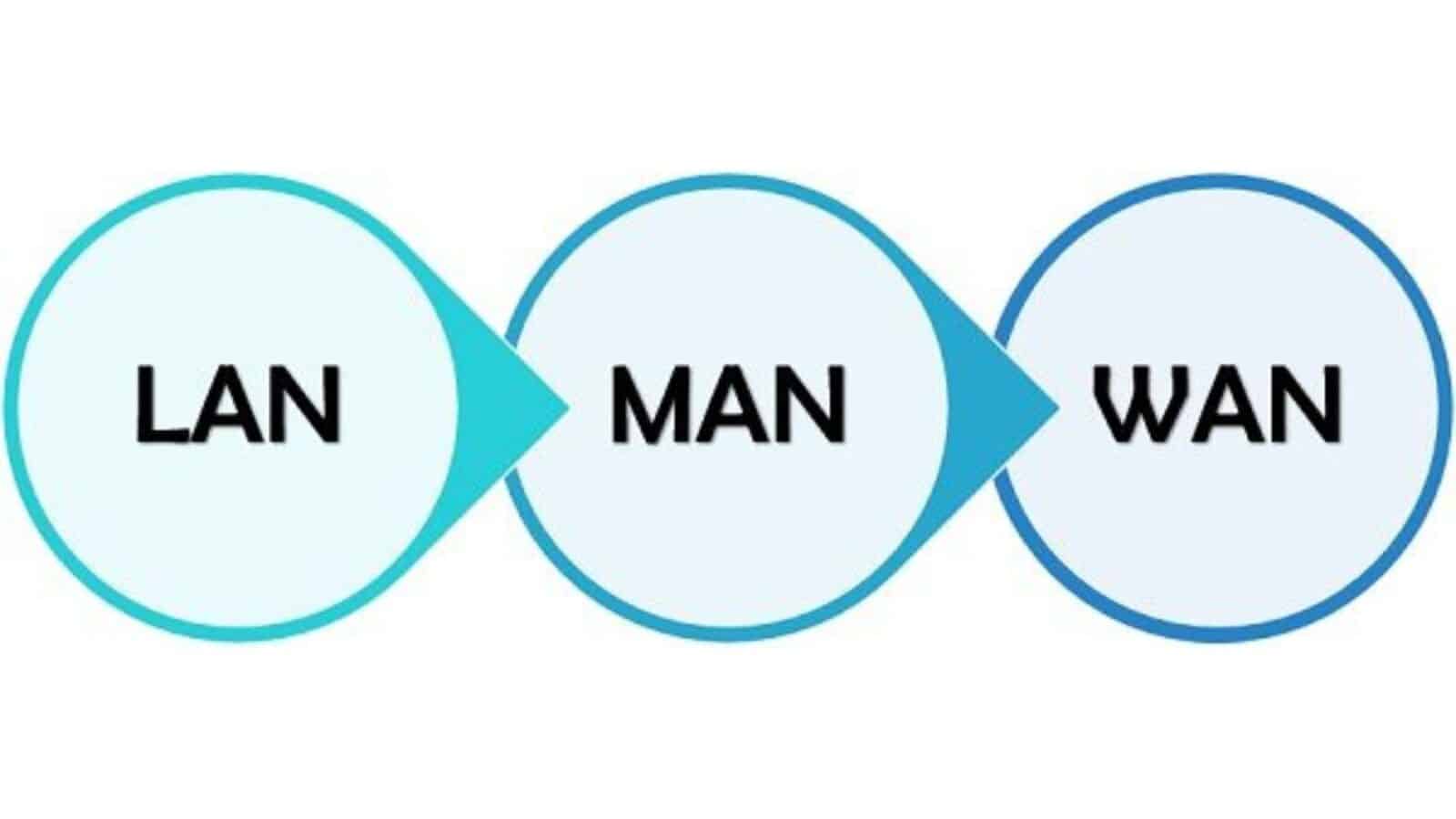Computer networks have become essential to our lives in today’s digital era. With the help of computer networks, we can share information and data with varied types of devices and people working at different locations.
What are the different types of computer networks?
Based on the operating geographical region, these computer networks are divided into three main types: LAN, MAN, and WAN. These three major computer networks offer excellent network services to everyone.
1. LAN
A LAN is a local area network. It is the computer network type used for connecting the local regions. These local regions have small WiFi networks, school computer networks, university computer networks, small business networks, etc.
So, the geographic span of LAN is minimal. Since the number of connected systems is minimal in the case of a LAN, the transmission rate is exceptionally high in this network.
2. MAN
MAN is the Metropolitan Area Network. It is the type of computer network responsible for connecting metropolitan regions. These urban areas can be big cities with huge buildings. The primary examples of MAN are telephone companies and cable TV networks.
MAN can have private or public ownership, using modems and cables to connect the computers. Also, in the case of a man, the request can be private or public. The internet speed of MAN is moderate and will range between 40 to 160 Mbps. The bandwidth of this computer network is average. MAN is more costly than the annual prices and costs of LAN.
3. WAN
A WAN is a wide-area network. It is the network type responsible for sharing data and information over widely extended geographical areas. Since it connects large regions, countries, and continents are prominent examples of the WAN’s geographical span.
The design of WAN is very complex. Thus, this computer network is highly high-maintenance.
WAN operates in vast areas, so; it cannot use cables or wires to connect the computers. Therefore, WAN uses 4G or 3G connections and broadband services. Also, in the case of WAN, the ownership can be private or public. WAN’s internet speed is the lowest among the three networks and can only reach 150 Mbps. Since it connects many devices, the bandwidth will be comparatively low. WAN uses satellites to connect computers; therefore, it is costly and sometimes even owned by multiple firms.
Also read – YouTube Automation: Learn All About the Recent Buzzword of the Internet
What is the difference between these three computer networks?

So, keep reading to learn about the LAN, MAN, and WAN differences.
LAN’s design makes it low maintenance, although it is a wired network. Hence, it is not portable and will only function if all networks’ wires are effectively connected with each other. In many households or offices, the building infrastructure must support convenient connections, which impacts steady relationships to the devices.
LAN is a privately owned network; thus, the internet speed is the highest among the three networks and can reach 1000 megabytes per second (Mbps). The bandwidth of this computer network is also the highest among the three networks. The LAN is the relatively cheapest computer network and is also known to be easy to operate.
MAN is an advanced version of LAN. However, the geographical span is the main difference between LAN and MAN. LAN only covers a small or local area, whereas the geographical span of MAN extends to a city or a metropolitan area.
Examples of WAN and LAN
The examples of WAN and LAN are that WAN covers more areas than LAN. It has higher geographical coverage than MAN. WAN is a combination of numerous LANs and MANs across a country or a continent. For example, LAN is used majorly in schools, residential buildings, offices, and others. However, WAN will connect group of countries. In addition, MAN will only cover cities and regions.
WAN is the most increased connectivity among these three networks. Due to this, the transmission rate will be prolonged owing to heavy traffic.
The number of interlinked computers is much higher in MAN than in LAN. However, the transmission rate of MAN is relatively average. MAN has a complex design, due to which it requires high maintenance.
Also read – Beyond Tomorrow: How Technology Changes the Future of Working Environment
Conclusion
All these networks connect computers, while geographical span is the primary LAN, WAN, and MAN differences. These networks connect computers in a specific area, allowing data and information to be shared.
With the help of these networks, it is possible to utilize any online service or feature in public or private domains. These computer networks help maintain digital communication, which has become a central part of the operating processes amongst individuals, businesses, and even governments.
As 5G networks are popularly adopted, the existence of LAN, MAN and WAN will have huge impacts. Hence, it becomes essential to understand the leading computer networks: LAN, MAN, and WAN.

















Leave a Reply